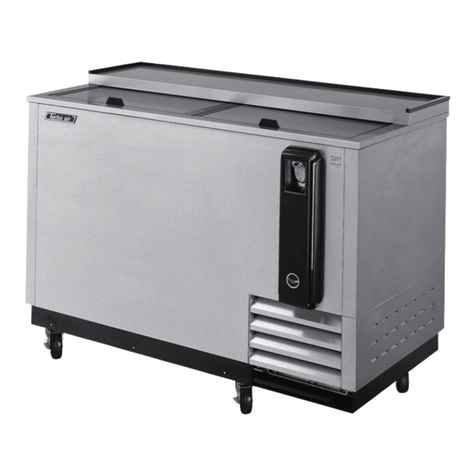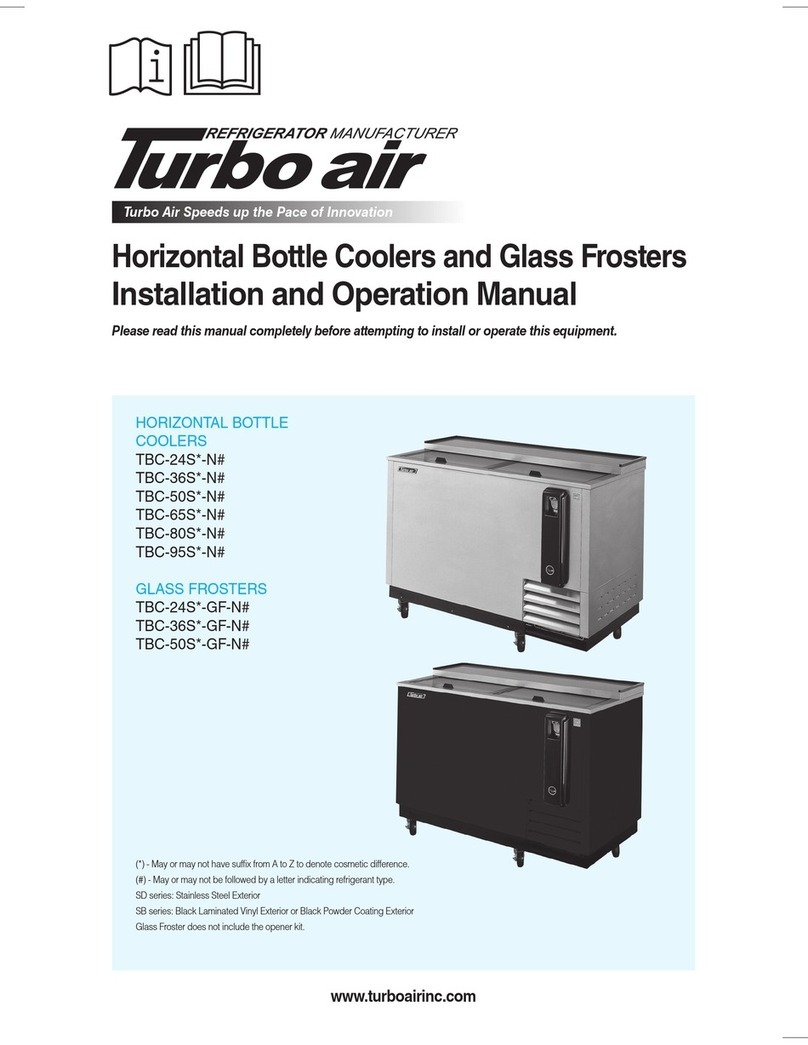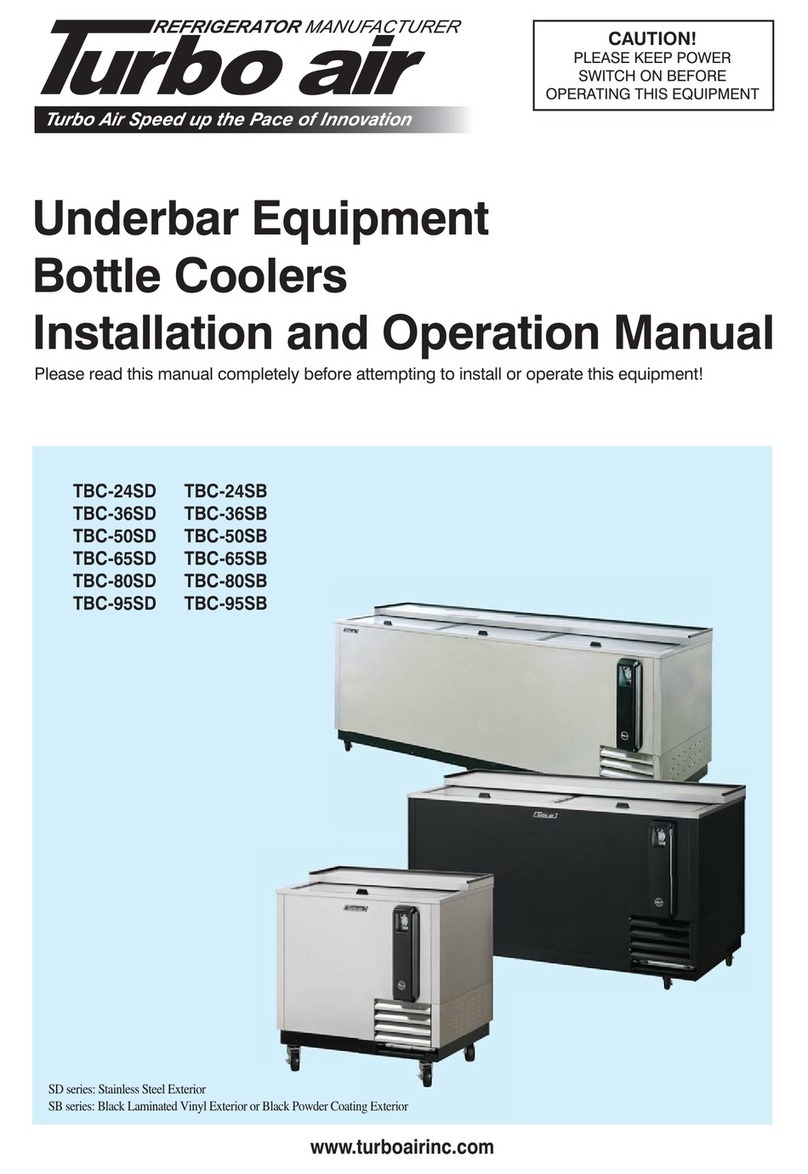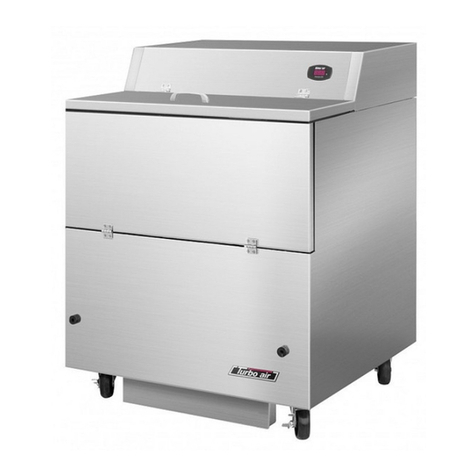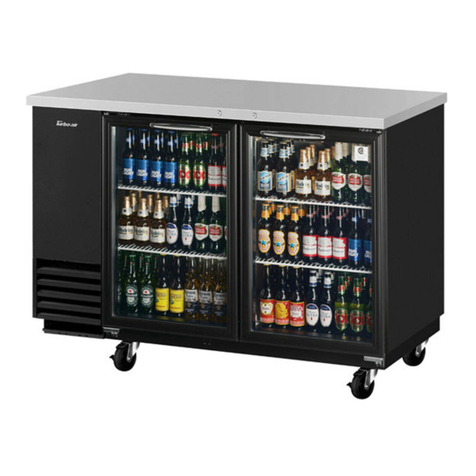prevent abrasion.
The system as supplied by Turbo air was
thoroughly cleaned and dehydrated at the factory.
Foreign matter may enter the system by way of
the evaporator to condensing unit piping.
Therefore, care must be used during installation
of the piping to prevent entrance of foreign matter.
Use only refrigeration grade copper tubing
properly sealed against contamination.
Figure 8. Suction piping installation on an
evaporator.
Figure 9. suction piping installation on
multiple evaporators.
Figure 10. Installation of expansion valve bulb.
Refer to Figure 8 through 9. Suction line risers
must be carefully selected, have an oil trap at the
bottom and at 15 foot intervals up the riser. They
should be the same size as the vertical riser
connected to its outlet. Riser should not be larger
in diameter than horizontal runs.
Refer to Figure 10.
Expansion valves are supplied with clamp for
securing bulb to the suction line. The bulb must
be secured at the evaporator outlet, on the side of
a horizontal run of suction line, before any trap.
Do not over tighten bulb clamps or deform the
bulb in anyway. Install all refrigeration system
components in accordance with applicable local
and national codes and in conformance with good
practice required for the proper operation of the
system.
All piping must be protected where it passes
through walls or ceilings. Precautions should be
taken to see that the piping does not touch any
structural the transmission of vibration into the
building.
The piping chase must be thoroughly sealed to
protect the tube and prevent ambient air from
entering the refrigerated space. Seal around the
drain line where it passes through the wall. Air
leaks can cause equipment problems. Damage the
structure and product, increase load, increase
